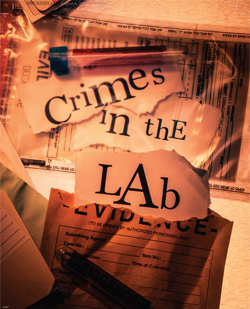Crime labs under the microscope after a string of shoddy, suspect and fraudulent results

Photo illustration by Stephen Webster
In January, the New York City medical examiner’s office confirmed that it was reviewing more than 800 rape cases from a 10-year period during which DNA evidence may have been mishandled by a lab technician who resigned in 2011 after an internal review uncovered problems with her work.
The review, then about half complete, had already turned up 26 cases in which the former technician failed to detect the presence of DNA evidence, including one in which the evidence has since led to an arrest in a 10-year-old rape case. The review uncovered 19 cases in which DNA evidence was commingled with DNA evidence from other cases.
A month earlier, a former chemist at a now-shuttered state drug lab in Boston was indicted on 27 counts of obstructing justice, tampering with evidence, perjury and other charges in connection with her handling of some of the tens of thousands of drug cases she worked on during her nine years there. “Little Annie” Dookhan is accused of faking test results, intentionally contaminating and padding suspected drug samples, forging co-workers’ signatures on lab reports, and falsely claiming to have a master’s degree in chemistry.
The ongoing investigation into her work—which could upend thousands of drug convictions—has already led to the closing of the lab, the release of hundreds of convicted drug offenders, and the termination of one lab official and resignation of another. It also led to the resignations of state Public Health Commissioner John Auerbach, whose office oversaw the lab, and Norfolk Assistant District Attorney George Papachristos, who was found to have had an inappropriately personal (albeit not romantic) relationship with Dookhan.
Click here to read the rest of “Crimes in the Lab” from the September issue of the ABA Journal.



